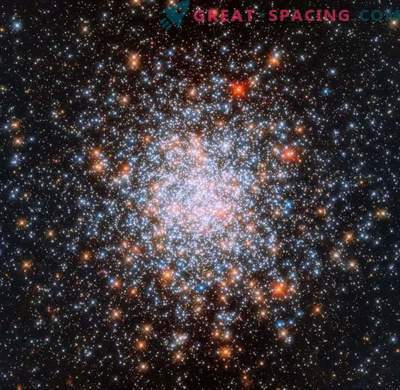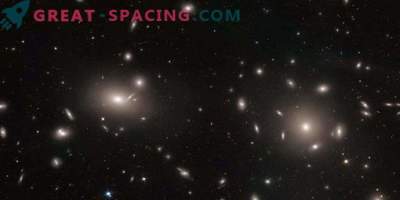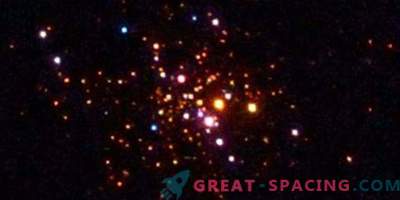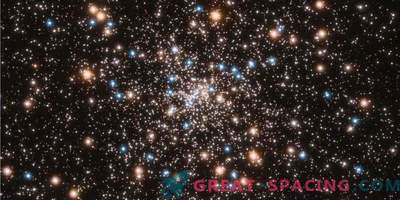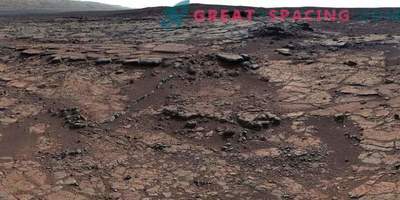
The stars in the ball cluster Messier 79 strongly resemble a snowstorm in a snow globe. Photo taken by the Hubble telescope
It seems that the Hubble Space Telescope managed to capture a real blizzard in space. In reality, you see the stars of the M79 globular cluster (NGC 1904), 41000 light-years distant from us. Lives on the territory of the Hare.
Globular-type clusters are groups of millions of stars bound by gravity. M79 has approximately 150,000 stars packed on a plot of 118 light-years. Here live the most ancient stars of our galaxy, whose age reaches 11.7 billion years.
Most of these clusters are clustered around a galactic center with a cylindrical axis. But the M79 location is set almost on the opposite side of the sky, and the neighborhood has a higher density of stars. There is an assumption that M79 is in a dwarf galaxy merging with the Milky Way. In the Hubble image, sun-shaped stars are marked in yellow. The red ones are bright giants representing the final stages of stellar existence. Blue - ancient objects that burn helium.
Blue marked "blue backward". These are unusual stars that glow like children's red-hot objects. Formed by the merging of stars in binary systems or in a collision in a crowded core.
Star cluster in 1780 found Pierre Mechen, who informed Charles Messier about it. After 4 years, William Herschel resolved the stars and described the object as a globular cluster. For images used data obtained in 1995 and 1997.








